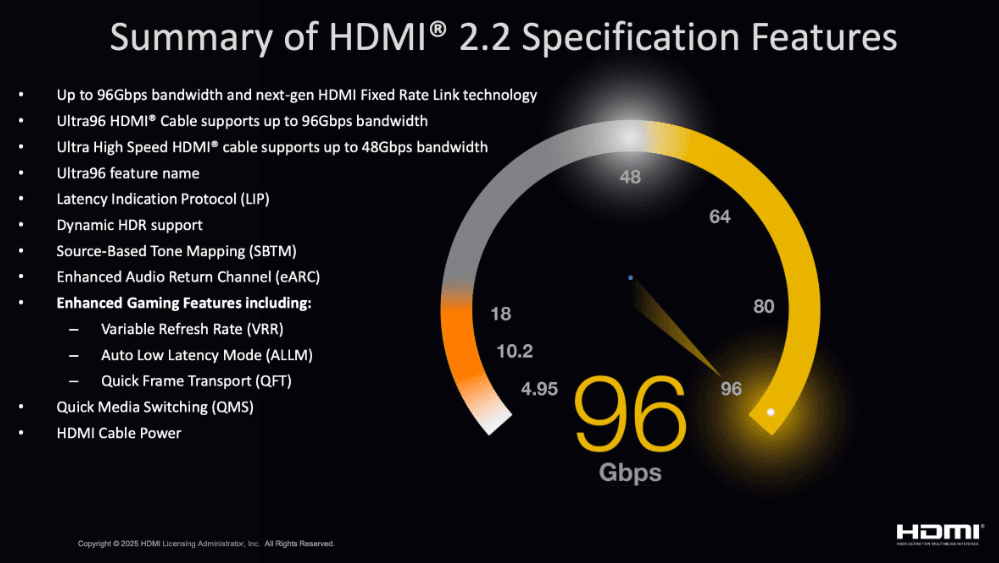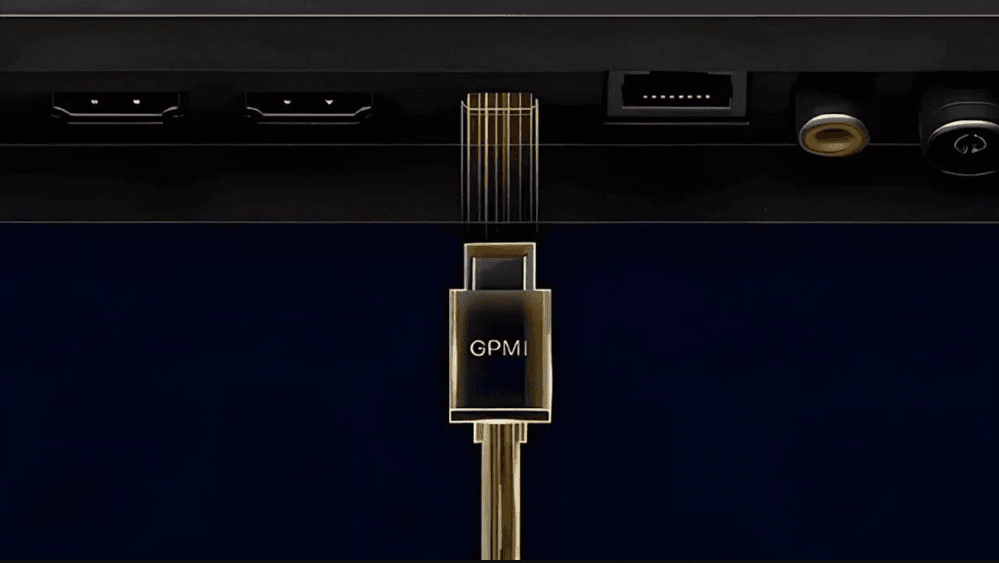
We first saw the successor to the widely-used HDMI 2.1 interface break cover at the Consumer Electronics Show in January, and now we have a much deeper understanding of what to expect from HDMI 2.2.
When the HDMI 2.2 standard was first announced at CES, the HDMI Forum that designed it promised it would be able to support “more demanding” video formats, and this week it explained exactly what it meant by those claims.
HDMI stands for High-Definition Multimedia Interface, and it’s one of the most important ways of sending high-quality video and audio signals from a device such as a console or streaming box to televisions. For the unaware, it refers to those ports on the back of your TV, which are noticeably bigger than the smaller USB slots.
At present, the HDMI 2.1 format found on most modern televisions is able to support signals of up to 48Gbps and 4K resolution. But when the new HDMI 2.2 cables start appearing in products, they’ll be able to support much beefier signals of up to 96 Gbps. They’ll be branded as “Ultra96” cables to distinguish them from standard HDMI.
The new HDMI 2.2 cables will be certified by the HDMI Cable Certification Program, similar to how existing Ultra High Speed HDMI (2.1) cables are already. Cables put through this program undergo rigorous testing to ensure they can support the specified bandwidth for both video and audio signals, and once they’ve made the cut, they’ll be able to display the Ultra96 branding.
Cables that support 96Gbps bandwidth can theoretically support 4K at a blazing-fast 240Hz, or 8K at 120Hz. They can also handle even higher resolutions, up to 12K at 120Hz, or 16K at 60Hz, which would enable the creation of displays capable of reproducing mind-blowing detail and accuracy.

But don’t get too excited about such a prospect just yet, because 12K and 16K content is likely going to be harder to procure than nuclear weapons for some time to come. While the extra bandwidth is good to have – for you never know what technological developments will appear in the next few years – the sad reality is that 4K content is going to be as good as it gets for the foreseeable future.
Although it is possible to buy 8K televisions, most TV manufacturers have given up making them, with the only real holdout being Samsung Electronics, which continues to push new models every year. But the likes of LG Electronics and Sony haven’t launched any new 8K models for a number of years already, and have no plans of creating any more, because there’s very little use for them.
That's because there’s almost no 8K content available for consumer consumption, and though the 8K Association is working to address this, most experts believe it will be many years before it becomes mainstream. Games with 8K graphics are also still likely several years away.
As such, it’s impossible to say if or when 12K or 16K content will ever become “standard” in the way that Full HD and 4K content is today. If it does happen, it’s likely going to take at least a decade, or probably even longer.
In other words, HDMI 2.2 is so far ahead that we have to wonder if the content industry will ever be able to catch up with it?
That being said, there is one more immediate benefit that HDMI 2.2 might provide, for the new specification supports the Latency Indication Protocol, which is a new feature that’s said to enhance the synchronisation of video and audio formats. But we’re not sure what noticeable difference that will have.
Meanwhile, in China, there has emerged a competing interface format known as the General Purpose Media Interface or GPMI, which comes in two flavours. The first is Type-C, which is also said to support 96Gbps, while the superior Type-B version absolutely crushes this with a bandwidth of 192Gbps.

While GPMI’s creators tout its ability to support “8K ultra-high-definition video transmission”, it also has many more practical advantages, including being able to deliver power as well as data, similar to the Thunderbolt 5 interface on Apple MacBooks. HDMI 2.1 and 2.2 are both limited to just pictures and sound.
A second benefit is that one device, such as TV, can send power via a GPMI cable to a second device, such as a console or an amplifier, so there would be no need for every device to have its own power source.
There’s a third benefit too, sort of, as the Type-C version of GPMI will be compatible with the existing USB Type-C connections that are found on millions of devices already, and capable of sending up to 240-watts of power through it. However, the Type-B variant will have its own proprietary interface, which will allow it to send 480-watts of power.
So does that mean HDMI 2.2, with its focus on higher bandwidth that's nice to have but not necessary to have, is a dead duck? That seems unlikely, given that HDMI is found on almost every new TV, streaming box and PC today. The HDMI Forum also talks about its potential to support newer, data-intensive applications, like virtual reality and spatial reality applications, perhaps paving the way for the metaverse to finally become a thing.
One thing’s for sure, it’s going to be interesting to see how manufacturers try to take advantage of HDMI 2.2’s impressive specifications.